
In the Lake MARUNUMA --Vol.19--
A Rainbow Trout Caught by Dry Fly in the Lake
In the most inner part of Nikkoh in Japan a small lake lies surrounded by deep mountains. The lake is always very calm and makes us feel as if we were in a different world. The lake is called Marunuma. In 1965 when I was a student I once went fishing there. In those days I knew nothing about fly fishing. I was absorbed in fishing flat crucian and sweet fish. A piece of uncertain information that there might be very big flat crucian in Marunuma drove me there. But what I found there was too clear water and the steep slope of the bank, which taught me that there was no hope of catching flat crucian. Furthermore, I was disappointed to hear that no angler had ever come to fish flat crucian. Anyway I had come all the way. I wanted to cast the line. I stepped on a stable foothold on the inner bank where an old hotel was built and started fishing. Two hours passed but I had no feeling of catching a fish. I gave up fishing. Nevertheless I kept in my mind that I saw fish jumping many times near my float. I did not know what kind of fish they were but their jumping way told me that they were not flat crucian.
Speckled Sedge, a dry fly that performed very well in the lake.
After 10 years' intervals I went to Marunuma to fish rainbow trout for the first time. It was the end of August, if I remember correctly. It was very hot in Tokyo but there was a sign of autumn around the lake. I remembered well how much different the lake looked to the eyes of a trout fisherman. Now it had a completely different impression from 10 years before when I came to fish flat crucian. Unlike an old day, there was a piece of information that some, even if a few of, trout were caught by dry fly. I got into a boat and started rowing towards the national road opposite of a landing place.
As most part around Marunuma forms steep slopes, branches of trees growing near the bank hung over the lake. Those overhanging branches of big trees cover the water surface like an umbrella and make the shade, which gives a perfect hiding place to fish that are waiting for insects to fall down the branches. As I came nearer to the national road, I found more hiding places for fish.
While I was rowing the boat along the line 30m away from the bank, I looked into the water below those branches. Before I half crossed the lake I found rises several times under the branches. They were small rises but could be seen clearly from faraway because the water surface was very quiet. When I came near to the large shade made by several entangled branches, rings of a rise rippled with a loud splash in front of me. I stopped rowing the boat and stood up slowly to start fishing.

Standing in the boat I aimed below the branches near the bank.
Speckled Sedge
My fly was Speckled Sedge tied on Size 10 hook. It was put to 9ft. 3X leader. It was a newborn fly. I chose it because terrestrial is suitable for lake fishing among dry flies. I used No.6 weight forward line to cast and the grey fly floated on the water surface 20m ahead like a fluff of a dandelion.It was floating on the surface so easily that I suspected that it was a bit too big. I waited for a while but nothing happened. I retrieved some length of the line and cast it again to the spot 5m apart. I waited for half a minute but the fly was still floating in the same posture as it settled down. I retrieved the line again and cast it to the spot another 5m apart. A rise occurred near the bank 30m away. It was very similar to the rise that had occurred in front of me before.
"Well, that fish has moved to such a place!" Neglecting that rise, I continued to make the fly float in front of me. But within a minute another rise occurred near the previous one. It was made by the same fish.
"That chap is still staying there." I could not wait any more. I moved my boat along the bank and cast the fly to the rise spot. Immediately the next rise occurred at about 10m left of my fly. The distance between the rise and me was not so different from that of the previous rises. Without delay I picked up the line and cast it towards rippling rings of the rise. Omitting false cast, I tried wet fly cast from the first. That was why the ring around the settled fly was under 2m in diameter. Well done! Perfect timing! Several seconds later my fly disappeared with a large splash just as if it had been arranged. No sooner had I set the hook to the fish than it ran towards the centre of the lake. Then it leapt sideways and split the water surface. It was a rainbow trout. After a few minutes fighting it came near to the boat. It was a beautiful fish of a bit more than 30cm.

A rainbow trout jumped at my dry fly. It was transparent and beautiful.
Chasing or Ambushing Fish
Thus nearly 10 rainbow trout were caught in my first fishing. In addition, almost all of them were wild and beautiful fighters. That made me have an increasingly high opinion of Marunuma. I went fishing there almost every week. Through several times fishing before the end of September I gradually knew about the notable features of the lake and the fish and also how to fish with dry fly in the lake.One of the features is that those fish that migrate just near the bank as well as those that stay under the overhanging branches often move around the regular course respectively. They cruise as they look for the floating bait. Once they find bait they float to get it and immediately go down into the water to return to the regular migration course. Naturally I adopted two types of fishing method.
One method is chasing fish. If I find a rise that is near enough to cast the fly without moving the boat, I will cast the fly there as soon as possible. But if the rise is not near and I have to move the boat, I will watch the rise carefully as I am moving the boat and check which direction the fish heads for. Then I will cast the fly to the spot where next rise is supposed to occur. When my guess is correct I make a success. But when I fail I find the fish and a rise in utterly opposite direction. That means I have to start from the beginning again.

Prediction of the migration course is a key factor to catch the cruising fish.
As for single rise I cast the fly at the rise spot at first but the fish seldom appeared there. It is quite natural because the cruising fish, unlike a staying one, moves away from the rise spot as soon as it makes a rise. I mean that the rise spot is often the spot where the fish once stayed but not now. However, if I cast the fly a little apart from the rise spot, it means I cast at random and I can only leave my catch to luck.
When the fish tries to eat a lot of floating bait the rise occurs one after another in a definite direction. I know very clearly the direction of the fish's move and its speed. I can often guess correctly where the fish will appear next, which makes me satisfied. But as for single rise it is very difficult to guess correctly.
The other method is ambushing fish. When the rise occurs rather regularly at one or several spots near the bank it is clear that the fish migrates although its course is not clear. Chasing a fish that moved far away often proves futile. On the other hand, if I keep the fly floating at the rise spot the fish will appear to the fly after moving around the circuit. This method is particularly effective when the bait is not floating so much and the rise is not found so often.

I cover the boat deck with a sheet so that the line is not entangled. That device enables me to make the next cast in a moment.
Sometimes rises are scarce due to bad condition or unsuitable fishing hours and either chasing or ambushing fish is impossible. In that case I row the boat along the bank from the wind ward to the downwind side and cast the fly near the bank with the same intervals. Fish often appear within 5m from the bank and suddenly become scarce farther away.
At that time I used dry flies in most cases and had a very few opportunities to use wet flies in Marunuma. In those days there were utterly small number of anglers there as if all the lake had been reserved for us. There were also only a few days when rises did not occur and I was bored. I mean that I was not in an awkward position because I had only dry flies. However, sometimes there was almost no rise for some reason. Then I tried to use Size 6 wet fly, to cast it towards the bank and to retrieve the line slowly. There were always some rainbow trout that attacked my fly even when there was no rise or response to dry flies. But I did not continue to use the wet fly because rises occurred soon and I changed it into a dry fly.
-- To be continued --
- NET SHOP INFORMATION
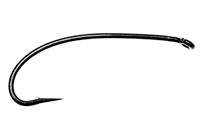
SL6 Black Spey Hooks
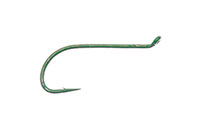
DU3 Limerick Spinner Hooks
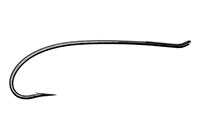
SL4 Single Bartleet Hooks
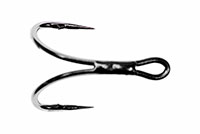
XD1 Tube Fly Double Hooks
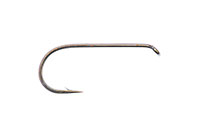
DD2 Flat Perfect Hooks
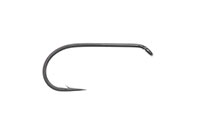
DD1 Black Terrestrial Hooks
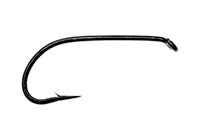
TD4 Old Limerick Wet Hooks
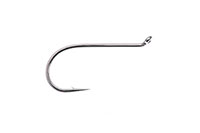
DU1 Silver May Hooks
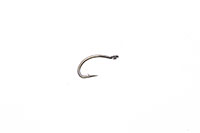
MU1 Flat Midge Hooks
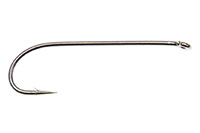
LD3 Long Limerick Hooks
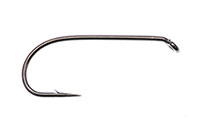
TD2 Summer Sproat Hooks
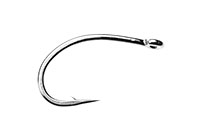
XS1 Tube Single Silver Hooks
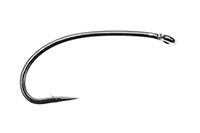
TD6 Siver Sedge Hooks

SL5 Black Spey Hooks

DU3 Limerick Spinner Hooks
- TROPHY CLUB
- FLY SHOW
- EXHIBITION
- MASTERS`
- FLY DRESSING CONTEST Archives
- TRAVELLER Archives
- TACKLE IMPRESSIONS Archives
- ANGLERS` PHOTO GALLERY Archives
- ----------------------------------------------
- トロフィークラブ
- フライショー
- エキシビション
- マスターズ
- フライドレッシング・コンテスト・アーカイヴ
- トラヴェラー・アーカイヴ
- タックル・インプレッション・アーカイヴ
- アングラーズ・フォトギャラリー・アーカイヴ
株式会社サワダ 185-0021 東京都国分寺市南町3-13-4
SAWADA'S INC. 3-13-4 Minamicho, Kokubunji, Tokyo 185-0021, Japan
写真・ドキュメントの無断転載を禁じます。
All the images and documents found on this site are owned by Ken Sawada and may not be used without permission.
But, link to this site is FREE.
Copyright © 2000 - 2025 SAWADA'S INC.. All rights reserved.
SAWADA'S INC. 3-13-4 Minamicho, Kokubunji, Tokyo 185-0021, Japan
写真・ドキュメントの無断転載を禁じます。
All the images and documents found on this site are owned by Ken Sawada and may not be used without permission.
But, link to this site is FREE.
Copyright © 2000 - 2025 SAWADA'S INC.. All rights reserved.
